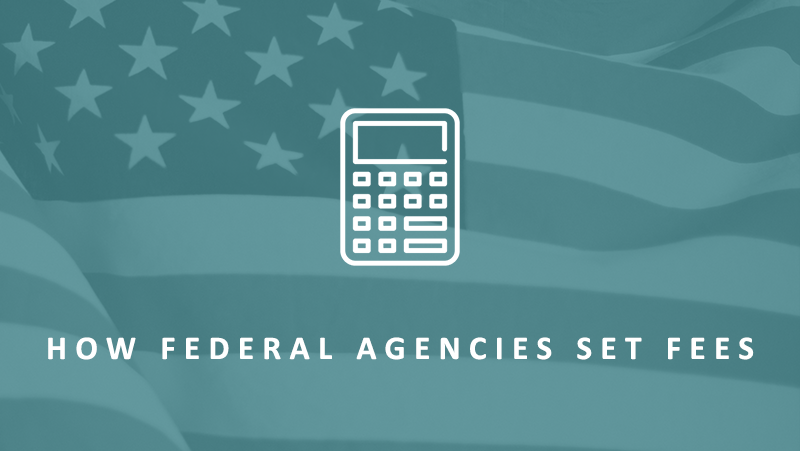Our Blog
In order set accurate fees, government agencies need to identify their costs of providing products and services. However, that’s often easier said than done.
Buying products and services from the U.S. government may sound like a strange concept. We tend to think about getting the things we want or need from companies in the private sector and paying our share of government expenses with taxes deducted from our paycheck. However, the federal government provides a wealth of services, including education, transportation, communication and immigration, which are paid for directly or subsidized by those who use their services.
How federal agencies, like the U.S. Citizenship and Immigration Services, determine and set fees has direct relevance, of course, for IT organizations that perform similar activities.
Federal Fee Revenue and Fee Funding
Federal services come at a price. Agencies maintain a steady workforce, use office space, and pay expenses like any other business. The average taxpayer likely assumes that they foot the bill for these costs. While this is mostly true (the U.S. government collected approximately $2.45 trillion in tax revenue in 2012), the 2012 President’s Budget reported nearly $300 billion in collections from user fees charged for federal products and services. In fact, many federal agencies are partially funded by fee revenue and a number of agencies are entirely fee funded, including the U.S. Mint, the U.S. Patent and Trademark Office, and the Federal Communications Commission. Despite significant revenue and partial to full funding of some agencies, most people know very little about federal user fees and how they are set.
How Fee Setting Works
As part of our activity-based costing and management (ABC/M) practice at Vergys LLC, we identify the cost to federal agencies of providing their products and services to the public. In some instances, these costs are used to calculate or set fees that are charged to people who benefit directly from the agency. Fees can be set by statute, typically by Congress, or through regulation by the agencies themselves. Determining fees can be a very complex process. GAO’s User Fee Design Guide says “[o]f the four components of implementing a user fee, setting the rate of the fee is perhaps the most challenging because determining the cost of the service is often quite complex and requires consideration of a range of issues.” Agencies responsible for setting their own fees through regulation must have a thorough understanding of their organization, as well as the authorities and regulatory guidance governing fee setting.
The aim in fee setting is to determine which program costs are relevant to the products and services being provided and to allocate these costs equitably to program beneficiaries. This requires knowledge of both financial and operational aspects of the agency and how the two are interrelated. Large databases or specialized IT solutions with ABC/M or business intelligence capabilities are often used to map business processes and to allocate program costs and overhead effectively. In some agencies, these efforts are so robust that they require entire branches dedicated to analyzing, performing, and documenting this process.
The Importance of Fee Setting
In addition to the $300 billion and growing in federal collections from user fees, establishing a comprehensive and accurate approach to fee setting is not only important to the beneficiaries of products and services, but also to the agencies that depend on fee revenue to fund operations. A recent example at the Department of Homeland Securities’ U.S. Citizenship and Immigration Services (USCIS) highlights the importance of a timely and thorough approach to fee setting. USCIS is approximately 95 percent fee funded through immigration application and petition fees. Vergys began working with the agency in support of a biennial fee review for fiscal years 2008-2009. The agency had not performed a comprehensive review of their fees since 1997. After identifying and analyzing the inputs necessary to develop an ABC/M model and determine fees, our analysis revealed that the current fee structure was out of alignment by 86 percent, or $1.2 billion. This lesson was invaluable to USCIS. It now consistently performs biennial fee reviews in support of accurate fee setting.
The article was originally published on CIOInsight.com.


